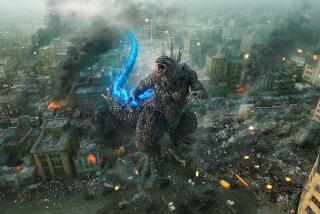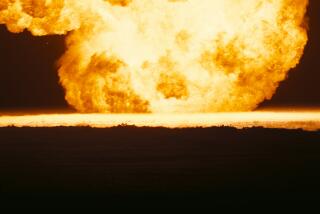Animated by the very idea of it
He claims he’s just a hobbyist, but when Dick Van Dyke showed up on the “Night at the Museum” set, the visual effects department was blown away by the 81-year-old actor’s command of the latest computer-animation programs.
“Dick Van Dyke is a huge visual effects aficionado,” says Jim Rygiel, the three-time Oscar winner and visual effects supervisor for “Museum,” which opens today. “He loved talking about what we were doing.”
Van Dyke says he started dabbling in the medium four decades ago on Robert Stevenson’s “Mary Poppins,” in which he dances and sings with animated butterflies and penguins.
“When I wasn’t filming I was hanging out with the animators,” Van Dyke says. “I spent a lot of time working with cartoon characters, which is what gave me the appetite for effects in the beginning. Looking at ‘Mary Poppins’ today, it’s amazing how well the technology does hold up and that was way before computers.”
After starring in 1968’s “Chitty Chitty Bang Bang,” in which he drove a flying car thanks to the magic of green-screen technology, Van Dyke bought a used Ultimatte system -- a pre-digital device that allowed visual-effects pros to do green-screen shots photochemically -- and set it up at his house. He played around with it a bit, and then about 15 years ago a friend recommended that he buy an Amiga Toaster, one of the earliest desktop computer-animating systems.
“You could take 3-D objects and figures and photograph a background and fill it in and animate,” Van Dyke recalls. “In those days, if you had 15 frames to render it took all weekend. It was very, very primitive but I just got hooked on it.”
Over the last decade, Van Dyke has upgraded his hardware and software along the way. He was finally able to put his effects skills to work on the CBS series “Diagnosis Murder,” in which he starred from 1993 to 2001.
“Production needed a shot of an Evel Knievel-type stuntman doing an impossible motorcycle jump,” Van Dyke says.
“Well, I went out to the location and shot some background plates and then I came back and put a 3-D computer-generated guy on a motorcycle doing the stunt and they used it on the show.”
Recognizing a fellow visual effects enthusiast on the “Museum” set, Rhythm & Hues visual effects supervisor Dan DeLeeuw had Van Dyke come into the effects studio for a cyberscan. They gave Van Dyke a digital 3-D model of himself to work with on his home system.
And he had a lot of new tricks he wanted to try at home after studying the complex effects-laden shots on “Museum,” about a night watchman (Ben Stiller) at a natural history museum who is shocked to find the exhibits coming to life.
“We had the best visual effects team in the world on ‘Night at the Museum,’ so I came home [after the shoot in Canada] all fired up,” says Van Dyke, who also plays a night watchman. “I have a number of figures that are caricatures of me with an extra-big nose and a longer chin, and I do a lot of animations with myself dancing. But the tough stuff is really smoke, water and fog. I’m forever working on my water effects.”
Ideally, Van Dyke says he would like to work on a film where he can put the skills he’s learned over the last four decades to the test.
“I haven’t had a chance lately to do much visual effects work in a film, so I really loved working with the guys on ‘Museum,’ ” Van Dyke says. “I would just give anything to be in a movie where I could have a hand in the visual effects.”
More to Read
The biggest entertainment stories
Get our big stories about Hollywood, film, television, music, arts, culture and more right in your inbox as soon as they publish.
You may occasionally receive promotional content from the Los Angeles Times.










